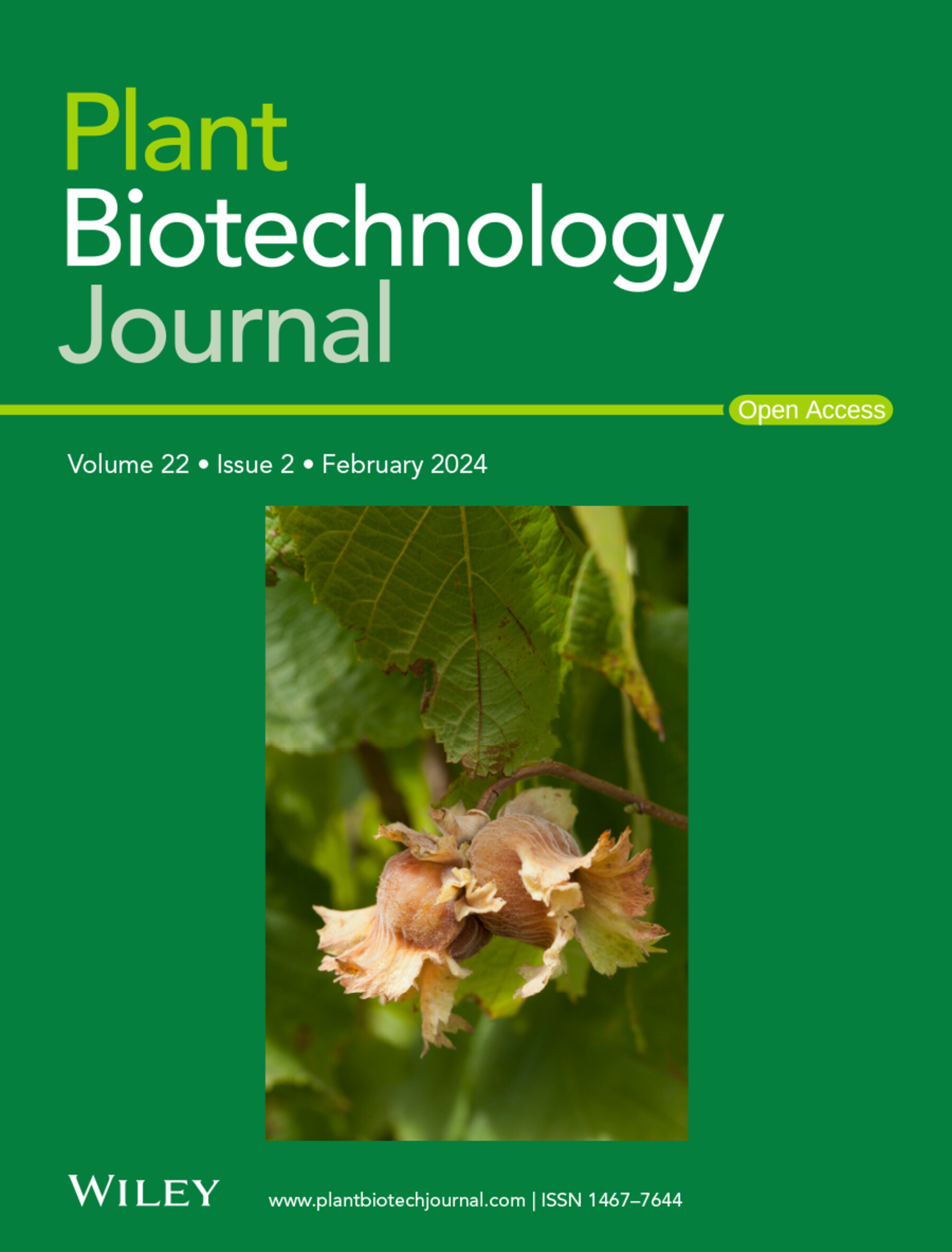Alternaria alternata Effector Aa593 Promotes Virulence by Hijacking the CmNAC29-Mediated Abscisic Acid Biosynthesis Pathway in Chrysanthemum.
IF 10.5
1区 生物学
Q1 BIOTECHNOLOGY & APPLIED MICROBIOLOGY
引用次数: 0
Abstract
The interaction between plants and pathogens has long been an actively researched field of plant immunity. In this study, we found an Aa593/CmNAC29-CmNCED3 module associated with the interaction between chrysanthemum and the fungal pathogen Alternaria alternata. Here, we identified a transcription factor, CmNAC29, in chrysanthemum that promotes abscisic acid (ABA) biosynthesis by directly regulating CmNCED3, a key rate-limiting enzyme gene for ABA synthesis, thereby determining the susceptibility of plants to A. alternata. On invading plants, pathogens secrete effectors that contribute to regulating plant immune responses. Interestingly, we screened a novel effector, Aa593, secreted by A. alternata that targets CmNAC29 in the plant cell nucleus. By interacting with CmNAC29 and thus enhancing its transcriptional activation activity, Aa593 promotes ABA biosynthesis and subsequently weakens plant resistance to A. alternata. Furthermore, genetic transformation assays indicated Aa593 contributes to the virulence of A. alternata. Our findings in this study have enabled us to elucidate how fungal effectors target plant hormone signalling pathways to promote their virulence and lay the theoretical foundations for further studies on the pathogenic mechanism of necrotrophic fungi.互交稻效应物Aa593通过劫持cmnac29介导的菊花脱落酸生物合成途径提高毒力。
植物与病原菌的相互作用一直是植物免疫学研究的热点。在本研究中,我们发现了一个与菊花与真菌互花菌(Alternaria alternata)相互作用相关的Aa593/CmNAC29-CmNCED3模块。本研究在菊花中发现了一个转录因子CmNAC29,该转录因子通过直接调节ABA合成的关键限速酶基因CmNCED3来促进脱落酸(ABA)的生物合成,从而决定了植物对a. alternata的易感性。在入侵植物的过程中,病原菌分泌的效应物有助于调节植物的免疫反应。有趣的是,我们筛选了一种新的效应物Aa593,该效应物是由a . alternata分泌的,可靶向植物细胞核中的CmNAC29。Aa593通过与CmNAC29相互作用,增强其转录激活活性,促进ABA的生物合成,从而减弱植物对互花麦草的抗性。此外,基因转化实验表明Aa593与绿僵菌的毒力有关。我们的研究结果使我们能够阐明真菌效应物如何靶向植物激素信号通路以提高其毒力,并为进一步研究坏死性真菌的致病机制奠定理论基础。
本文章由计算机程序翻译,如有差异,请以英文原文为准。
求助全文
约1分钟内获得全文
求助全文
来源期刊

Plant Biotechnology Journal
生物-生物工程与应用微生物
CiteScore
20.50
自引率
2.90%
发文量
201
审稿时长
1 months
期刊介绍:
Plant Biotechnology Journal aspires to publish original research and insightful reviews of high impact, authored by prominent researchers in applied plant science. The journal places a special emphasis on molecular plant sciences and their practical applications through plant biotechnology. Our goal is to establish a platform for showcasing significant advances in the field, encompassing curiosity-driven studies with potential applications, strategic research in plant biotechnology, scientific analysis of crucial issues for the beneficial utilization of plant sciences, and assessments of the performance of plant biotechnology products in practical applications.
 求助内容:
求助内容: 应助结果提醒方式:
应助结果提醒方式:


